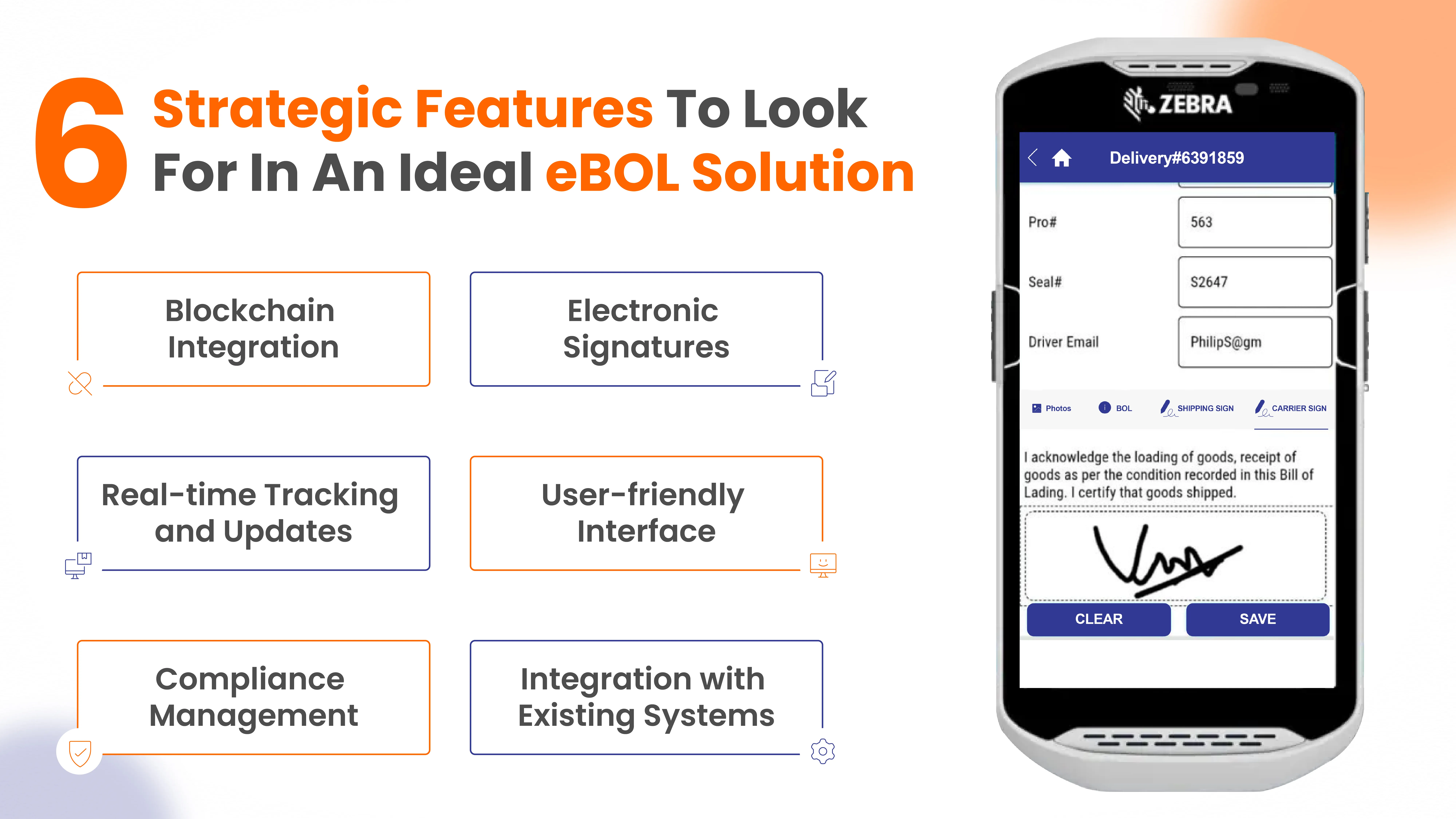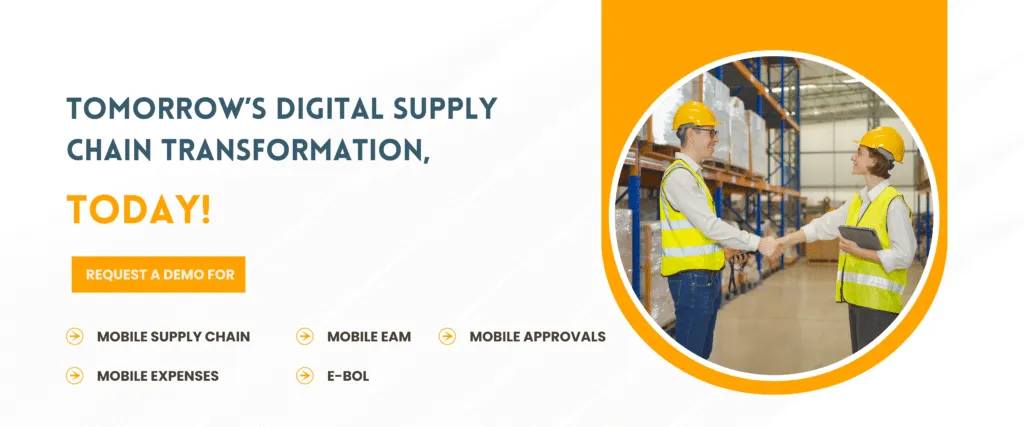
An Electronic Bill of Lading (eBoL) is a digital version of the traditional paper-based Bill of Lading (BoL) used in the shipping and logistics industry. The Bill of Lading is a critical document that serves as a receipt for shipped goods, a document of title, and a contract of carriage between a shipper and a carrier. However, there are several challenges in eBoL adoption, primarily related to legal recognition, security concerns, and resistance to change.
An eBoL performs the same functions as a traditional BoL but leverages digital technology to streamline and enhance the logistics process. By utilizing blockchain, electronic signatures, and digital records, eBoLs offer a more efficient, secure, and transparent alternative to their paper counterparts, potentially overcoming these challenges. In this blog, we will provide an overview of eBoL, its typical challenges, and the key advantages of electronic bill of lading, which is transforming global supply chains.
The shift from paper-based BoLs to eBoLs in the logistics industry is driven by several compelling advantages as follows:

eBoLs significantly reduce the time required to process and transmit documents. Traditional paper BoLs can take days or even weeks to reach their destination, whereas eBoLs can be transmitted instantaneously. This is one of the leading advantages of electronic bill of lading recognized by global shippers.
The use of eBoLs can lead to substantial cost savings by eliminating expenses associated with printing, courier services, and storage. Additionally, it reduces the risk of lost or misplaced documents, which can incur further costs.
eBoLs can incorporate advanced encryption and blockchain technology, ensuring that the document is tamper-proof and only accessible to authorized parties. This greatly reduces the risk of fraud and forgery in today’s digital landscape.
By reducing the need for paper, eBoLs contribute to environmental sustainability. The logistics industry can reduce its carbon footprint and support global efforts to combat climate change, which is another important advantage of electronic bill of lading.
eBoLs facilitate better tracking and monitoring of shipments, enhancing transparency throughout the supply chain. This improved visibility helps companies ensure compliance with regulatory requirements.
Despite the numerous advantages of electronic bill of lading, the adoption of eBoL is not without challenges, particularly in the realm of legal and regulatory compliance.
One of the primary legal challenges is the varying levels of recognition and acceptance of eBoLs across different jurisdictions. While some countries have embraced digital documentation, others still require traditional paper-based BoLs, creating inconsistency and uncertainty.
The lack of standardized protocols and interoperability between different digital systems can hinder the seamless adoption of eBoLs. Diverse formats and technologies used by different stakeholders can create compatibility issues.
Ensuring the security and privacy of digital documents is paramount. The risk of cyber-attacks, data breaches, and unauthorized access must be mitigated through robust security measures and encryption technologies.
Many stakeholders in the logistics industry are accustomed to traditional paper-based processes and may resist transitioning to digital alternatives. This resistance can be due to a lack of understanding, fear of technological complexity, or concern about initial implementation costs.
Compliance with international regulations, such as the International Maritime Organization (IMO) guidelines and the United Nations Commission on International Trade Law (UNCITRAL) Model Law on Electronic Transferable Records, can be complex. Navigating these regulatory landscapes requires thorough understanding and adherence to legal frameworks.
To address these challenges and facilitate the widespread adoption of eBoLs, several strategies can be employed:
Efforts should be made to harmonize legal frameworks across different jurisdictions to ensure the uniform recognition and acceptance of eBoLs. International organizations and trade bodies can play a pivotal role in driving this harmonization.
Establishing industry-wide standards for eBoLs can enhance interoperability and ensure that digital documents are compatible across different platforms and systems. Collaborative efforts among industry stakeholders are essential for creating these standards.
Investing in advanced security technologies, such as blockchain and encryption, can protect eBoLs from cyber threats and unauthorized access. Regular security audits and updates are also crucial for maintaining data integrity.
Providing education and training to stakeholders about the benefits and functionalities of eBoLs can help overcome resistance to change. Demonstrating efficiency, cost savings, and security benefits can encourage wider acceptance.
Companies should work closely with regulatory authorities to ensure compliance with relevant laws and regulations. Engaging in dialogue with regulators and participating in industry forums can help shape favorable regulatory environments for eBoLs.
The above practices would surely go a long way in mitigating the challenges encountered in eBoL adoption. However, to earnestly implement these practices and ensure they generate the desired results, you need to adopt a robust electronic bill of lading tool that makes this job easier, while offering a collaborative culture among all the stakeholders. Towards this end, you need to look for a solution that offers the right features to support your business objectives. In the next section, let's explore the key features of an electronic bill of lading tool and how it simplifies documentation while optimizing the logistics processes.
To facilitate the transition to electronic bills of lading, various eBoL tools and platforms have been developed. These tools offer a range of features designed to streamline and secure the documentation process that include:

Many eBoL tools leverage blockchain technology to create an immutable and transparent ledger of transactions. This ensures that all parties can trust the authenticity and integrity of the document.
eBoL platforms often include electronic signature capabilities, allowing authorized parties to sign documents digitally. This feature enhances the efficiency and legality of the documentation process.
eBoL tools provide real-time tracking and updates, enabling stakeholders to monitor the status of shipments and documents throughout the supply chain. This visibility improves coordination and reduces delays.
Modern eBoL platforms are designed with user-friendly interfaces, making it easy for users to create, manage, and share documents. Intuitive navigation and clear instructions help reduce the learning curve.
Advanced eBoL tools include features for managing compliance with international regulations and standards. Automated checks and validations ensure that documents meet legal requirements.
Many electronic bill of lading platforms are designed to integrate seamlessly with existing enterprise resource planning (ERP) and logistics management systems. This interoperability enhances efficiency and reduces manual data entry.
While there are a couple of eBoL tools in the market that might closely meet your requirements, you need to look for a solution that is affordable, customizable, user-friendly and above all meets your specific business requirements to truly realize the advantages of electronic bill of lading.
In the above context, explore Propel Apps' electronic bill of lading software that eliminates all manual and time-consuming processes associated with generating, storing, archiving, and retrieving BoL documents. The solution is affordable, secure, easily accessible, and above all, offers an intuitive and user-friendly interface. To learn more about our solution and how it optimizes your documentation and logistics process, while saving your costs, schedule a call with us for a free demo.
The adoption of electronic bill of lading represents a significant advancement in the logistics industry, offering numerous advantages over traditional paper-based processes. However, the transition to eBoLs is not without challenges, particularly in the areas of legal recognition, security, and compliance. By harmonizing legal frameworks, developing industry standards, implementing robust security measures, and educating stakeholders, these challenges can be effectively addressed. eBoL tools, with their advanced features and capabilities, are pivotal in facilitating this transition and ensuring a more efficient, secure, and transparent logistics process.
